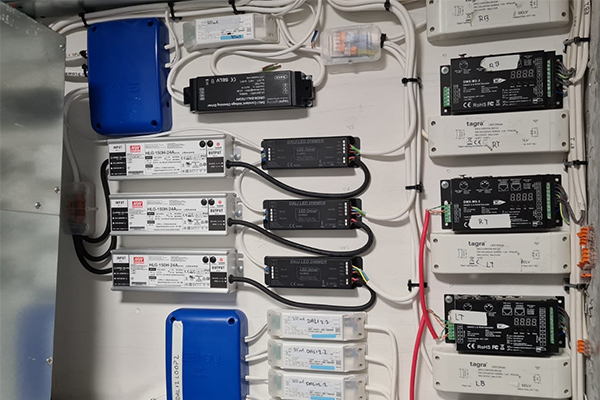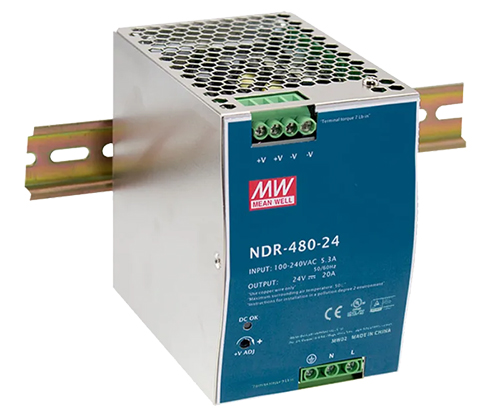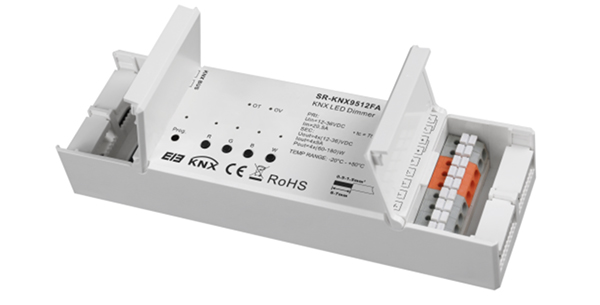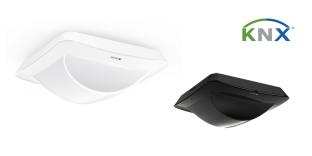
Simon Buddle looks at the advantages of using driver hubs for LED lighting control to simplify installation and maintenance.
The M&E world often feels like it is stuck in the 1970s. All around us we see people extolling the virtues of solar, heat pumps, IR heating, as well as a plethora of other new and exciting technologies that have hit the market, but the uptake in the consultancy offices of many M&E companies has, at best, been slow, and some might go so far as to say, glacial. There is of course good reason for that; it is they who must hang their collective hats on the design and efficacy of the systems they have recommended, and for which their client has paid so handsomely. It makes absolute sense to be one hundred percent sure that the products and systems, designed by them, will work exactly as they have described. The M&E world must, first and foremost, be built on robust and repeatable design. Without that, their business will not last, and as the old adage goes, ”If it ain’t broke, don’t fix it!”

The ubiquitous LED
I am sure that you have been in design team meetings where the same old technology and solutions have been proposed, and whilst you are quietly thinking to yourself that they are at least five years out of date, it is not your professional indemnity insurance on the line. However, there is one area that I feel we should impose our design will a little more, and that is with the abundance of LED lights of all denominations within the house.
LED spotlights and tape are now so common as to account for more than 80% of all household lighting, so it’s about time that we, M&E, and electricians began to look at a more modern take on drivers and their locations. Any electrician will tell you about the nightmare of dealing with dimmable drivers that are hidden in ceilings or on top of joinery, below kick boards in the kitchen or a myriad of other places, and once the principal person working on the project has left site, all knowledge of the locations is lost forever. That is no good for anyone, and certainly not for the client or any future maintenance team. Surely, we can do better than that.
Driver hubs
The use of driver hubs makes a lot of sense to me. Co-locating as many LED drivers, power supplies and KNX control gear in one place ticks a lot of boxes.
Mounting inside a metal enclosure gives a defined space which can be calculated rather than trying to squeeze electronics into places they aren’t designed to go. This also requires less wiring. With a hub position, you just need a single twin and earth, and one KNX cable, and you are done. Every other wire is local link wiring. That is far easier to manage than making multiple connections in ceilings, above bookcases or below kick boards, and maintenance becomes a breeze because we have the right space and the opportunity to work within it. Another benefit is that we can use a single power supply for multiple LED strips, reducing the quantity of electrical kit required.

KNX LED control means that using any number of LED controllers from the likes of Jung, Zennio, Sunricher, or MDT to name a few, also saves a huge amount of space. One power supply and, for example one Jung 5-gang LED controller, reduces the number of drivers required, greatly reducing the space needed and, as a by-product, makes the installation for the electrician considerably easier to work on. That is a lot of wins in one box. But it doesn’t stop there.


These hub locations can also be used for RGB and DMX, and drop in either a DALI module or a standard dimmer, and we have got nearly all of our lighting bases covered. The larger the property, the more sense it makes. For commercial buildings, I would suggest that it is hugely time-saving and as a consequence, cheaper.

As with all intelligent systems, there are a few things that we need to consider. These include space and ventilation, which are key to product longevity. Electrically, we must be mindful of voltage drop over distance on the ELV side of the driver, i.e. from the driver to the LED. You can make that calculation in your head, or just go to www.rapidtables.com/calc/wire/voltage-drop-calculator.html. They have calculators for just about everything. The voltage drop should be 3-5%. If you need to reduce the voltage drop, increase the wire gauge and recalculate.
Conclusion
The world of technology continues to move at a pace that outruns even the most proactive and forward-thinking M&E consultancies. As KNX professionals, we are, by and large, more familiar with the very latest innovations and certainly in the realm of lighting, we are probably more knowledgeable on the options and possibilities that are available. And crucially, we are familiar with installation and maintenance techniques and requirements.
For me, LED lighting hub control panels make perfect sense. LED lighting is not new, but perhaps it is time to rethink the drivers, power supplies and how they are deployed. It helps everyone involved, it can standardise design and control boxes, and I don’t know of any other system that can match KNX for its versatility in this area of the technology market.
Simon Buddle CEng MIET, is a consultant for Future Ready Homes, a specialist in BMS and ELV services system design.












